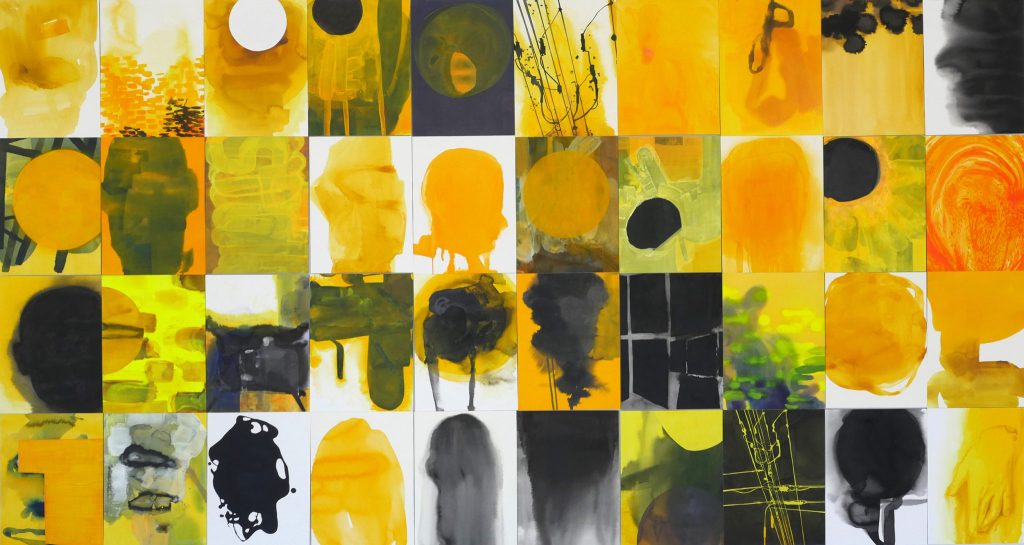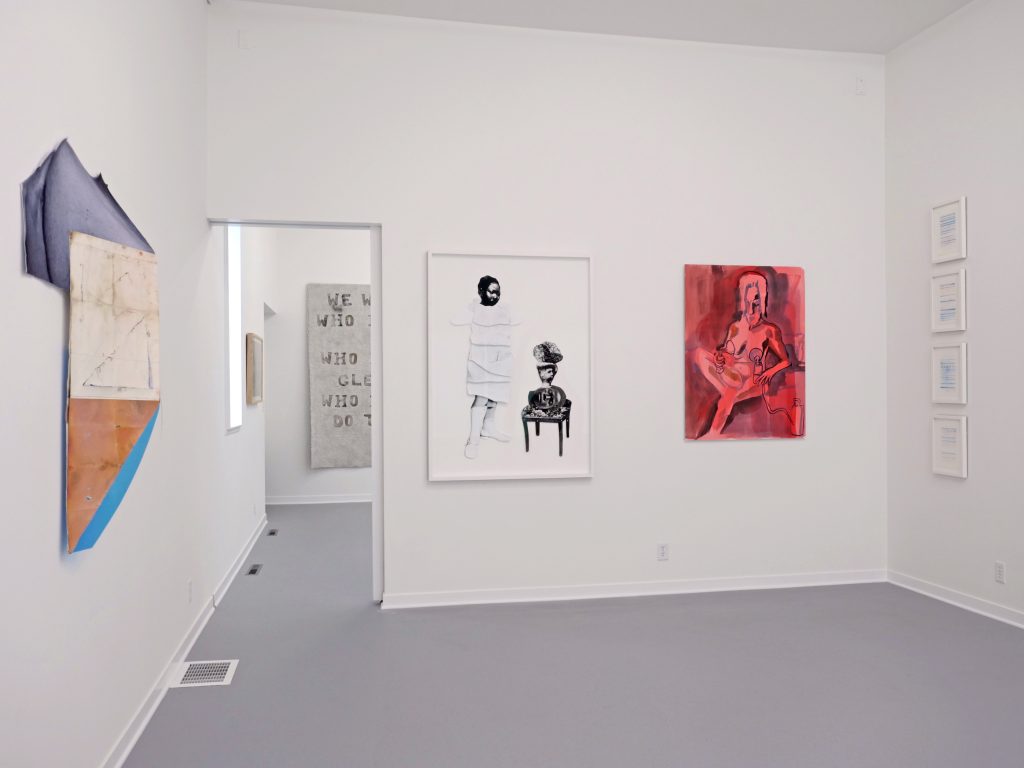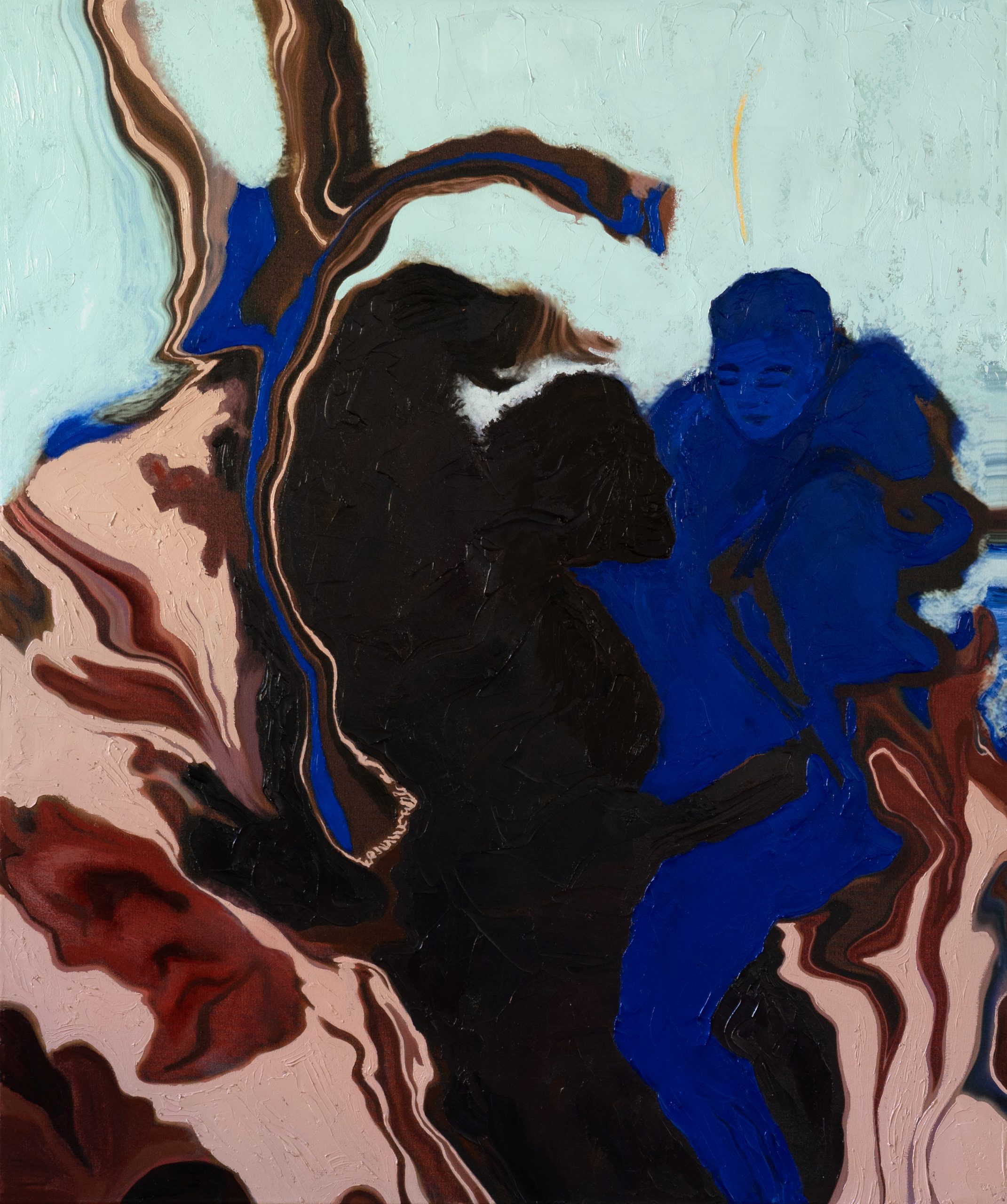Dreamsong Gallery’s Rebecca Heidenberg and Greg Smith on the Twin Cities Art Scene
From residencies to non-profit institutions and the first-ever Twin Cities Art Week, creative culture in Minneapolis and St Paul is booming

Five years ago, Rebecca Heidenberg and Greg Smith moved from NYC to Minneapolis, “essentially sight unseen.” The couple was seeking change, but it was Smith’s acceptance to the University of Minnesota’s three-year MFA program that inspired them to head to the Midwest. While Smith earned a degree in fiction writing, Heidenberg—who had worked as an art advisor in galleries dealing in modern and contemporary art—completed her feature-length documentary, Queens of the Revolution. They settled in and soon enough, the pair found themselves founding a gallery. Dreamsong opened in 2021 as a storefront gallery, cinema and artist’s residence, with the intention of nurturing a dialogue between the local scene and the wider contemporary art world. This year the industrious duo added another layer to the conversation with Twin Cities Art Week (12-16 October), which featured a range of cultural programming across Minneapolis and St Paul.
We spoke with Smith and Heidenberg to learn more about their inaugural art week, the mission behind it and Dreamsong’s first artist-in-residence: Maria Kozak.

Minneapolis is known globally for its Walker Art Center, but how would you describe the local Twin Cities art scene?
The art scene here is tight-knit and it’s very rewarding to be part of the community—there’s a strong ethos of mutual support and a deep commitment to social justice. Importantly, Minnesota is also a state that funds the arts generously. Over the last few years, there have been many poignant and lasting artistic responses to the murder of George Floyd. One incredible collective that comes to mind in that vein is Creatives After Curfew, a decentralized collective of BIPOC and queer artists and allies who mobilized during the Minneapolis uprisings in June 2020. There are a lot of incredible artists working here, as well as world-class museums, including the Walker Art Center, influential commercial galleries such as Hair + Nails and Bockley Gallery, some amazing non-profit institutions and a long history of artist-run spaces—a number of which have popped up over the last couple of years, including Night Club and Papa Projects.

What would people find most surprising about midwestern art or artists?
One thing that’s been surprising to us is how varied and rich artistic practices are here and the diversity of lived experiences expressed through the work. What we see here are artists who have built up their own internal logic and aesthetics through years of dedicated work and vision. When you have access to affordable studio space, robust arts funding and teaching jobs, there’s less pressure to bend your practice toward the vagaries of the art market.
It’s exciting to witness such a dynamic range of work. Dreamsong can move from showing Ta-coumba T Aiken, who has spent 40 years developing his own approach to abstract painting; to Lee Noble, whose collaged canvases are utterly original transmissions from a lifetime of aesthetic hyper-awareness; to our current show of Allison Baker‘s pop-inflected surreal sculptures and collages.
We want to make sure people living in the Twin Cities don’t overlook what’s going on here
This year you launched Twin Cities Art Week. What inspired that?
Over five days, we highlighted 26 exhibitions featuring over 200 artists and there is a full calendar of events, including a gallery crawl, live performances, exhibition walkthroughs, film screenings, artist talks, parties and more. The participants included major institutions, small non-profit spaces, commercial galleries, artist-run spaces and university galleries dedicated to the presentation of contemporary art.
The impetus behind it was to showcase the quality of contemporary art here, which is not only under-recognized in the broader contemporary art world, but even locally. There are important collectors here for example, but they often focus their acquisitions on major galleries in New York and LA. We want to make sure people living in the Twin Cities don’t overlook what’s going on here and we want the artists here to gain the wider recognition and accolades they deserve. Twin Cities Art Week has been embraced and people have said repeatedly that it’s just what we needed. The plan is to continue to produce the Art Week on an annual basis and hopefully also draw in visitors from around the country.

Currently on view at Dreamsong is a solo exhibition for local artist Allison Baker. What drew you to her work? Was the show timed for Twin Cities Art Week?
We had already started planning the exhibition when Twin Cities Art Week was scheduled but we were really happy about the timing. Rebecca initially discovered Allison’s work while researching artists for “A Glitter of Seas,” our inaugural exhibition. Allison’s piece in that exhibition, titled “Night Mother,” was a rug fire-branded with this text: “WE WORRY ABOUT WHO IS GOING TO FIND US WHO IS GOING TO CLEAN UP THE MESS WHO IS GOING TO DO THE GODDAMN DISHES THE NEXT DAY.” While that piece was aesthetically quite different from the body of work in her current show, titled Abject Permanence, I think it gives you a hint of the tone of her practice.
In her recent work, we love that on the surface, the work is rendered in an alluring, almost kitschy, bright palette, but that underneath lies a deeply serious feminist critique of contemporary culture. She’s a fantastic representation of the Twin Cities’ art scene. As Allison writes in her artist statement, “The works subvert the aesthetics of the Laura Ashley-clad midwestern family: syrupy and quixotic, in a palette that reflects an exaggerated, cloying sweetness while maintaining a cheapness or artificiality.”

Dreamsong is housed in a former home. Does the architecture put any limitations on what you can show?
It’s not actually a house—it’s more like a small compound. There’s a two-story building—the gallery is on the ground floor, and we live in an apartment above it. There’s also a separate standalone building across the courtyard where we present public programs, including artist talks, screenings and performances. The space is very important to us, because it allows us to do more community-facing programming than a traditional commercial gallery would allow. Behind that building, there’s a little house which we’ve turned into an artist residency. The fact that we live above the gallery doesn’t really affect the programming we can do, it just means that it’s integrated into our lives, and our son’s life, too!
It was built around the turn of the 20th century out of brick, and then painted black and has a long history of artists living here. The ground floor is pretty typical for a gallery—gray floors, white walls, high ceilings, so it’s neither really homey nor industrial.

Tell us more about the artist residency program.
The Cloud House Residency is up and running with our first resident, the artist Maria Kozak, currently in situ. Kozak will also be included in an upcoming two-person exhibition at the gallery with Julia Haft-Candell, titled Dissolving Margins, which opens 29 October. Maria is set up with a gorgeous nearby studio, courtesy of the owners of Q.arma Building.
We are honored to have Maria here as our first resident. We’ve been following her practice for many years and her recent work is really next level, out of this world. Drawing inspiration from the occult and esoteric orders, she began her recent paintings with digital sketches, intuitively manipulating two color fields until desirable forms emerge. The central subject of this body of work are the cyclical, irresolvable interactions that emerge from the classic dichotomies of the human condition, such as physical/spiritual, control/surrender or stillness/movement.
We’re establishing a non-profit corporation to oversee the residency, and are currently in the process of forming a board. One of our key goals with the residency is to facilitate engagement with the local arts scene and offer the opportunity to create networks that will benefit both the visiting artist and the local community. Ideally, residents will be able to establish connections with local artists and institutions while they’re here.

What’s next for Dreamsong? What do you hope to accomplish in 2023?
We plan to start doing art fairs in 2023 and broadening our exposure for the sake of both the gallery and the artists we’re supporting. We hope that people will continue to be excited by our programming in the new year and that Twin Cities Art Week will have a successful second run.
Hero image, detail of “Fate and Providence” (2022) by Maria Kozak, courtesy of the artist












